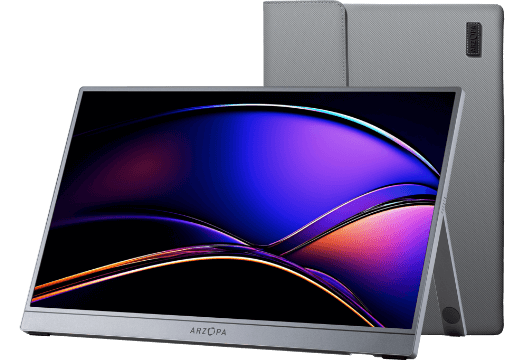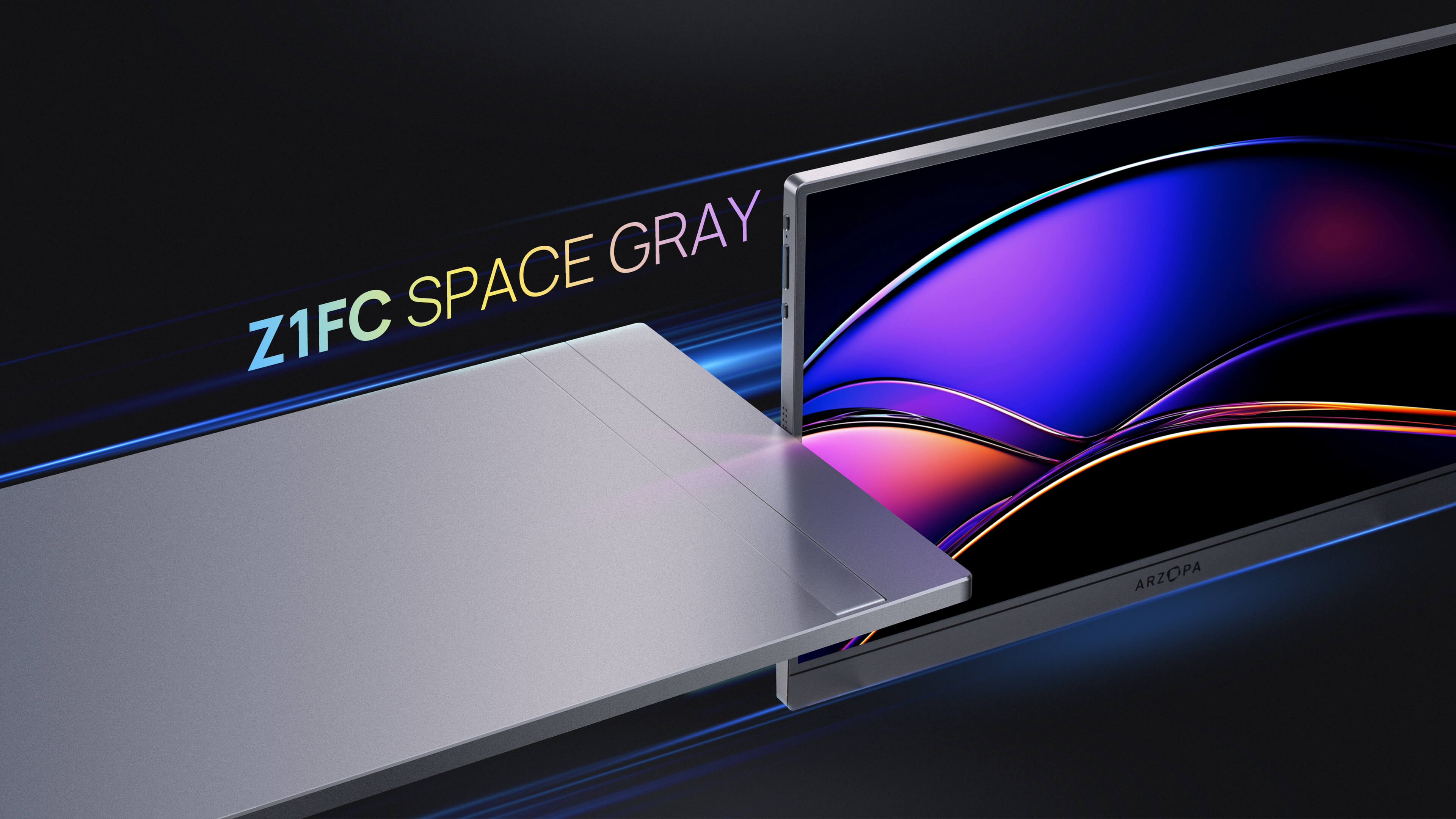Refresh rate is a crucial factor in determining the visual quality and smoothness of a display. Understanding the concept of native refresh rate is essential for anyone looking to optimize their viewing experience, whether for gaming, watching movies, or general use. In this ultimate guide, we'll dive deep into the world of native refresh rates and explore how they impact your visual experience.
Native Refresh Rate Defined
Native refresh rate refers to the maximum number of times a display can refresh the image per second without any interpolation or enhancement from the hardware or software. This rate is determined by the display's hardware specifications and is typically measured in Hertz (Hz).
It's important to distinguish native refresh rate from effective refresh rate. While native refresh rate represents the maximum potential of the display, effective refresh rate reflects the actual performance experienced by the user, which can be influenced by factors such as hardware capabilities, software optimization, and the content being displayed.
Common native refresh rates include:
- 60Hz: The most widely used refresh rate, suitable for general use like web browsing, office work, and casual gaming.
- 120Hz: Ideal for fast-paced content such as gaming, sports, and action movies, providing a more fluid and responsive experience.
- 240Hz: The highest commonly available refresh rate, primarily used for professional gaming and high-speed applications, offering the smoothest and most responsive experience.

Why Native Refresh Rate Matters
Impact on Motion Clarity and Smoothness
A higher native refresh rate plays a crucial role in enhancing the visual experience by reducing motion blur and improving overall quality. This is particularly important for applications involving fast-paced motion, such as gaming, video playback, and even scrolling through content on a website.
By increasing the native refresh rate, the display can update the image more frequently, minimizing motion blur and providing a clearer visual experience. For example, a 144Hz display can update the image 144 times per second, resulting in a much smoother experience compared to a 60Hz display.

Gaming: How Native Refresh Rate Affects Input Lag and Visual Responsiveness
Native refresh rate significantly impacts gaming performance, especially for competitive gamers who rely on quick reflexes. A higher refresh rate can reduce input lag, which is the delay between the time a user inputs a command and when the display responds. A 144Hz display can reduce input lag by up to 50% compared to a 60Hz display.
Furthermore, a higher native refresh rate improves visual responsiveness, making the gaming experience feel more fluid and responsive. This is particularly noticeable in fast-paced games where quick movements and rapid changes in visuals are common. Studies have shown that a 144Hz display can improve visual responsiveness by up to 30% compared to a 60Hz display.
Movie and TV Viewing: The Role of Native Refresh Rate in Reducing Motion Blur
While native refresh rate is crucial for gaming, it also plays a significant role in enhancing the movie and TV viewing experience. A higher refresh rate can reduce motion blur and provide a more cinematic feel, although the benefits may not be as pronounced as in gaming since most movies are shot at lower frame rates.
Choosing the Right Refresh Rate for Your Needs
When selecting a display based on refresh rate, consider factors such as your primary use case (everyday use, professional gaming, or content creation) and compatibility with your devices (gaming consoles, PC graphics cards).
For casual users, a 60Hz refresh rate is often sufficient for tasks like web browsing and office work. However, if you're a gamer or enjoy watching fast-paced content, a higher refresh rate of 120Hz or above can significantly enhance your visual experience.
60Hz vs 120Hz vs Higher: Real-World Differences
To better understand the real-world differences between refresh rates, let's compare the visual experiences:
- 60Hz: Provides a smooth experience for general use but may result in some screen tearing and motion blur during fast-paced content.
- 120Hz: Significantly enhances the visual experience, reducing screen tearing and blur. Particularly beneficial for gaming and fast-paced video content.
- 144Hz and above: Offers even more pronounced improvements in visual quality, especially for professional gamers and applications requiring high responsiveness and detailed visual feedback.
Examples of content that greatly benefit from higher refresh rates include:
- Fast-paced games with rapid motion (e.g., first-person shooters, fighting games)
- High-speed video content (e.g., sports, action movies)
- Professional applications requiring precise visual feedback (e.g., video editing, 3D modeling)
It's important to note that some TV manufacturers use marketing terms like Motion Rate or Smooth Motion to describe their motion interpolation technology, which creates intermediate frames to reduce motion blur. However, this is not the same as the native refresh rate and should not be confused with it.
TV Industry Myths and Misconceptions
The TV industry is known for its aggressive marketing tactics, which can sometimes mislead consumers. One common tactic is using terms like Motion Rate, which is often confused with native refresh rate.
Motion Rate is a marketing term used by Samsung to describe their motion interpolation technology, which creates intermediate frames to reduce motion blur and improve the overall viewing experience. However, it is not the same as the native refresh rate, which is the actual number of frames a TV can display per second without any interpolation.
To identify a TV's true native refresh rate, follow these steps:
- Check the TV's specifications on the manufacturer's website or packaging, looking for terms like "native refresh rate," "refresh rate," or "Hz."
- Read reviews and technical articles from reputable sources like CNET and Rtings, which often provide detailed specifications, including the native refresh rate.
- Check the TV's settings menu to see if it lists the native refresh rate or provides an option to set it manually.
- Look for industry certifications like HDMI 2.1, which guarantees a minimum native refresh rate of 120Hz.
Remember, a higher native refresh rate doesn't always mean a better viewing experience, as other factors like panel quality and motion interpolation technology also play a significant role.
Display Technologies and Native Refresh Rates
Different display technologies handle refresh rates in unique ways:
- OLED (Organic Light-Emitting Diode) displays excel at managing refresh rates due to their emissive technology, where each pixel emits its own light. OLED panels can achieve refresh rates up to 120Hz and support dynamic refresh rate switching based on the content being displayed.
- LCD (Liquid Crystal Display) and LED displays rely on a backlight to illuminate the liquid crystals, which can limit refresh rate management. However, recent advancements have enabled higher refresh rates, with some high-end LCD TVs reaching 240Hz.
- Emerging technologies like MicroLED and Quantum Dot are expected to revolutionize refresh rate management, providing better control and potentially higher refresh rates.
Looking ahead, the trend is towards higher refresh rates and more dynamic control to meet the increasing demand for high-definition content, gaming, and virtual reality applications.
Also see: Arzopa Z1FC Portable Gaming Monitor
Gaming anywhere with Arzopa Z1FC 144Hz Portable Gaming Monitor for PS5, Xbox, Nintendo Switch, and more. Features a full HD and 100% sRGB IPS screen for stunning visuals. Ultra-fast speed of 144Hz allows immediate action on screen. Why not experience smoother, clearer gaming movement now!
Arzopa Z1FC 144Hz Portable Gaming Monitor 16.1" Screen

- 16.1 Inch Full HD (1920x1080p) IPS with a premium aluminum design.
- 1.7 lb weight and 0.3-inch thickness make it ideal for on-the-go use.
- Supports PS5, Xbox, Switch, Steam Deck, PCs, phone, and more.
- Includes a built-in stand for both portrait and landscape viewing.
How to Optimize Your Display's Native Refresh Rate
To get the most out of your display's native refresh rate, consider the following:
- Adjust your display settings for maximum performance, ensuring that the refresh rate is set to its highest supported value.
- Take advantage of Adaptive Sync technologies like G-SYNC and FreeSync, which synchronize the refresh rate of your display with the output of your graphics card, reducing screen tearing and stuttering.
- Be cautious when overclocking your display to achieve non-native refresh rates, as this can introduce artifacts, reduce image quality, and potentially damage your display.
FAQs About Native Refresh Rate
Q: Can I notice the difference between 60Hz and 120Hz?
A: Yes, the difference is noticeable, especially in fast-paced content like gaming and action movies. A 120Hz refresh rate provides a smoother, more fluid experience with reduced motion blur.

Q: Is a higher refresh rate always better?
A: Not always. While higher refresh rates offer benefits, other factors like panel quality, response time, and color accuracy also contribute to the overall visual experience. Consider your specific needs and budget when choosing a display.
Q: Can I use a higher refresh rate than my display's native refresh rate?
A: While it's possible to overclock some displays to achieve higher refresh rates, it's not recommended as it can introduce artifacts, reduce image quality, and potentially damage your display. It's best to stick with your display's native refresh rate for optimal performance.
Conclusion
Understanding native refresh rate is key to unlocking the full potential of your display and enjoying the smoothest, most immersive visuals possible. By considering your specific needs and the factors that influence refresh rate performance, you can make an informed decision when selecting a display or optimizing your current setup.
As display technologies continue to evolve, we can expect to see even higher refresh rates and more advanced features that enhance the visual experience. By staying informed and making smart choices, you can ensure that you're always enjoying the best possible visuals, whether you're gaming, watching movies, or simply browsing the web.
We hope this ultimate guide has provided you with a comprehensive understanding of native refresh rates and their importance in shaping your visual experience. If you found this article helpful, please share it with others who may benefit from this knowledge. And don't forget to leave a comment below with your thoughts, experiences, or any questions you may have about native refresh rates!












